Your New Ancestral Lines Pairing System
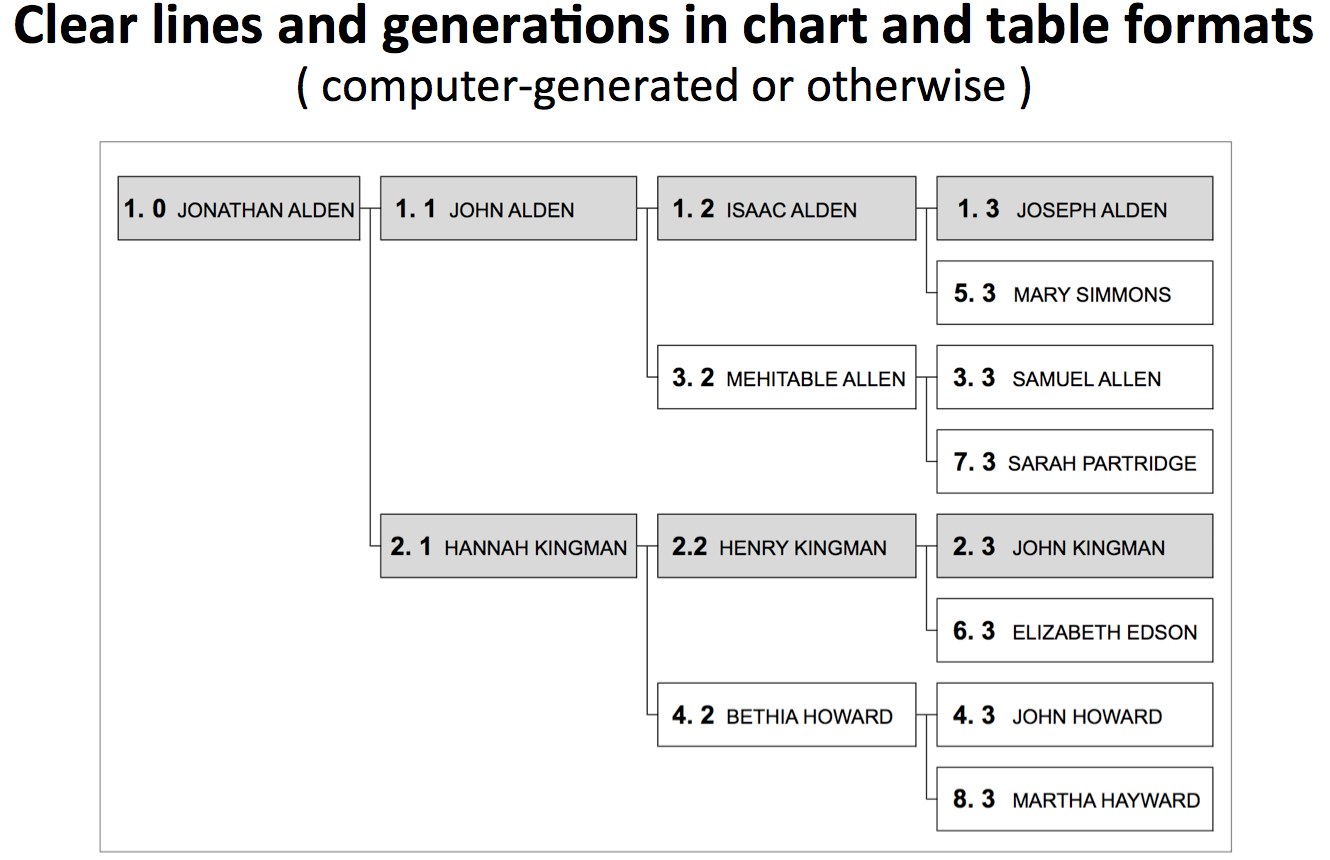
A classic “bow tie” chart is even more revealing of the symmetry in the new system, as in the following:
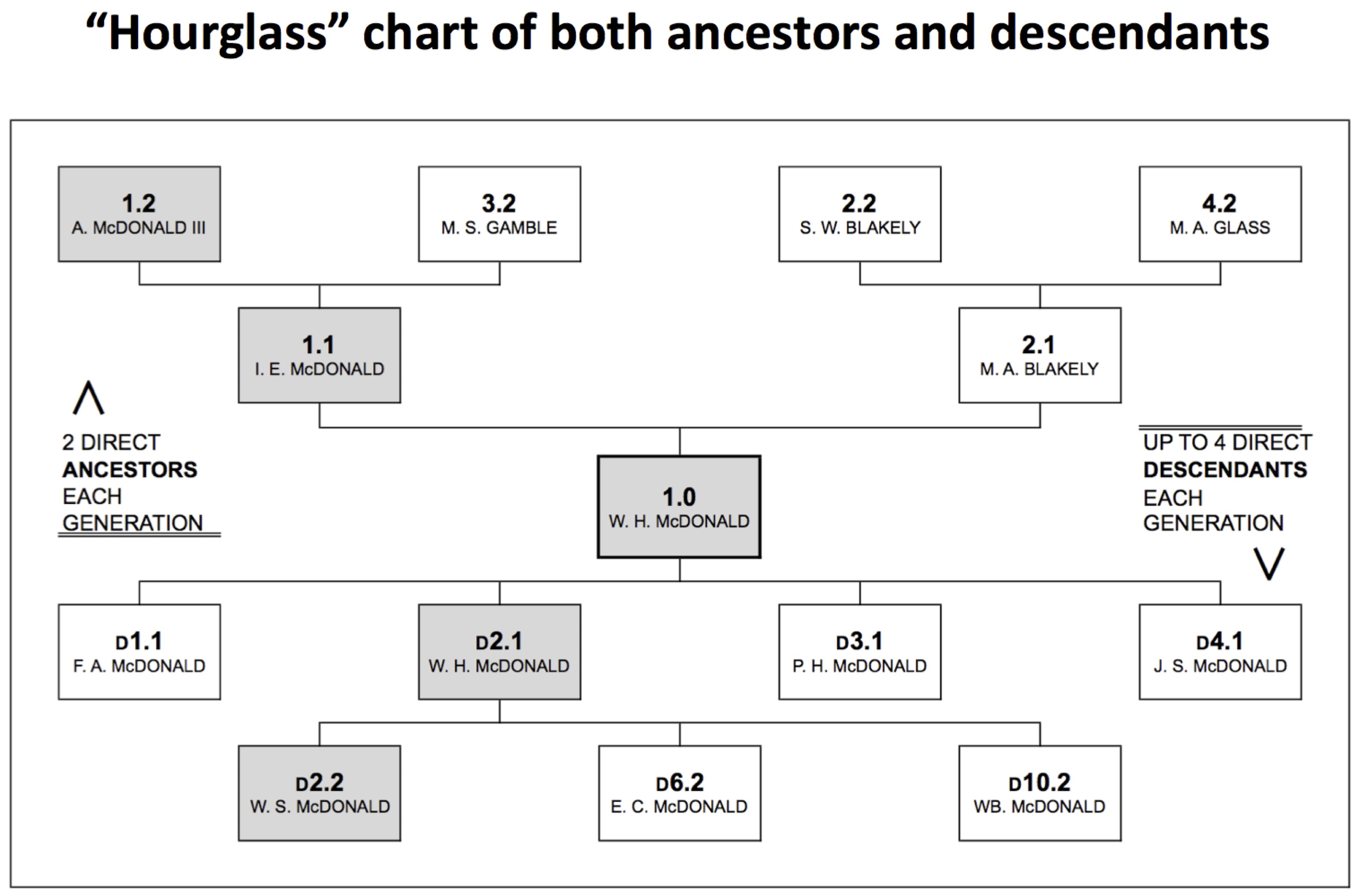
The initial publications concerning this system are in articles published online by the New England Historic Genealogical Society (NEHGS) in Boston. These can be accessed free of charge in the publications archive at www.americanancestors.org. Please take a few minutes to read these – especially the full PDF versions of the 2011 and 2015 articles – and then perhaps contribute your own ideas and comments through this Ancestral Lines website concerning the system and its apparent benefits.
The Ancestral Lines format is easy to read and understand, with unique indicators recording relationships briefly with key information – setting each direct Line as a continuous ancestral lineage, then visibly numbering successive Generations along each Line. A few brief video introductions are available on this website, on the Presentations page.
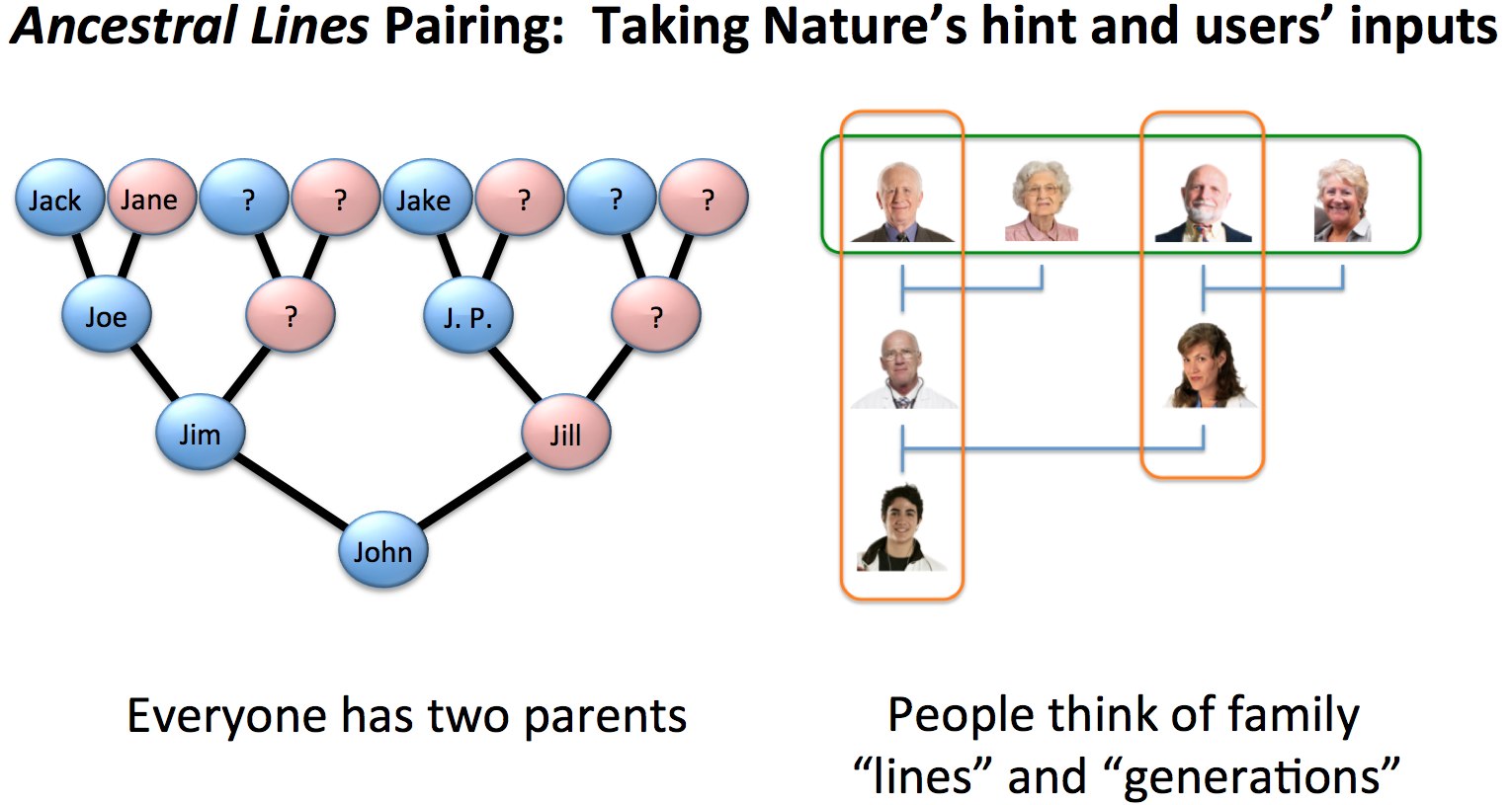
With Ancestral Lines, all ancestors are individually numbered without first compiling a comprehensive set or naming every individual. Line numbers are added in the new system at one half the rate individuals are added in the Ahnentafel method, and these smaller numbers continue to be used into the deeper ancestries. These therefore are not merely “index” locator numbers; they also visibly convey additional information beginning with the individual’s family line and generation
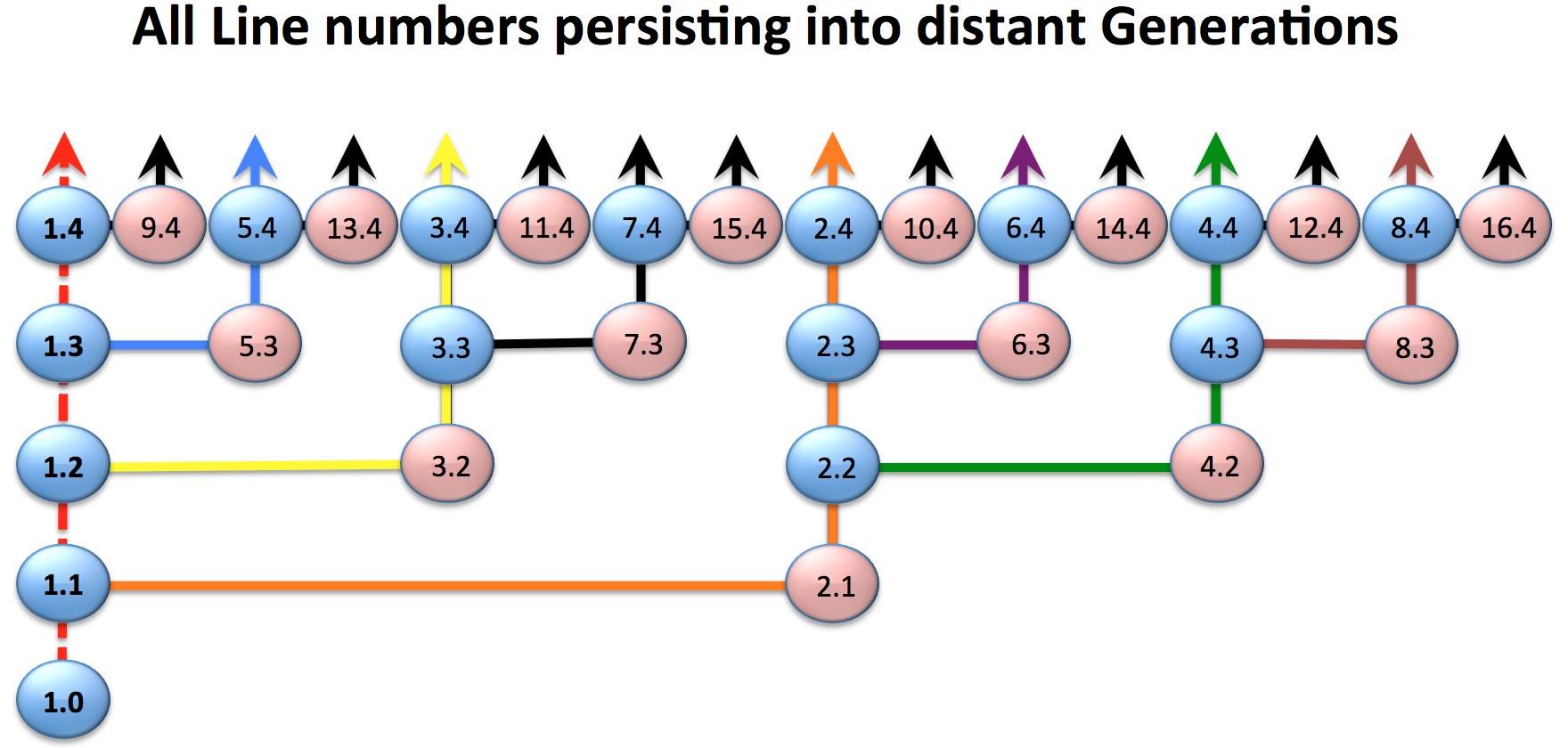
The basis of the Ancestral Lines Pairing System is to show the appropriate Line and Generation as the unique indicator for each direct ancestor. This begins by numbering the Lines in proper sequence for this outcome, calculating branching maternal Lines based on the descendant’s paternal Line number and parents’ Generation number

Uniquely Numbering Each Ancestral Line, Generation, Sibling
The initial Lines and Generations calculated for direct ancestors, displayed in a straightforward two-number format, as shown above, can be used effectively in many applications. The next alternative to consider is to build on this basic framework in a three-number format and uniquely number all Siblings and paternal or maternal half-Siblings of the direct ancestry consecutively
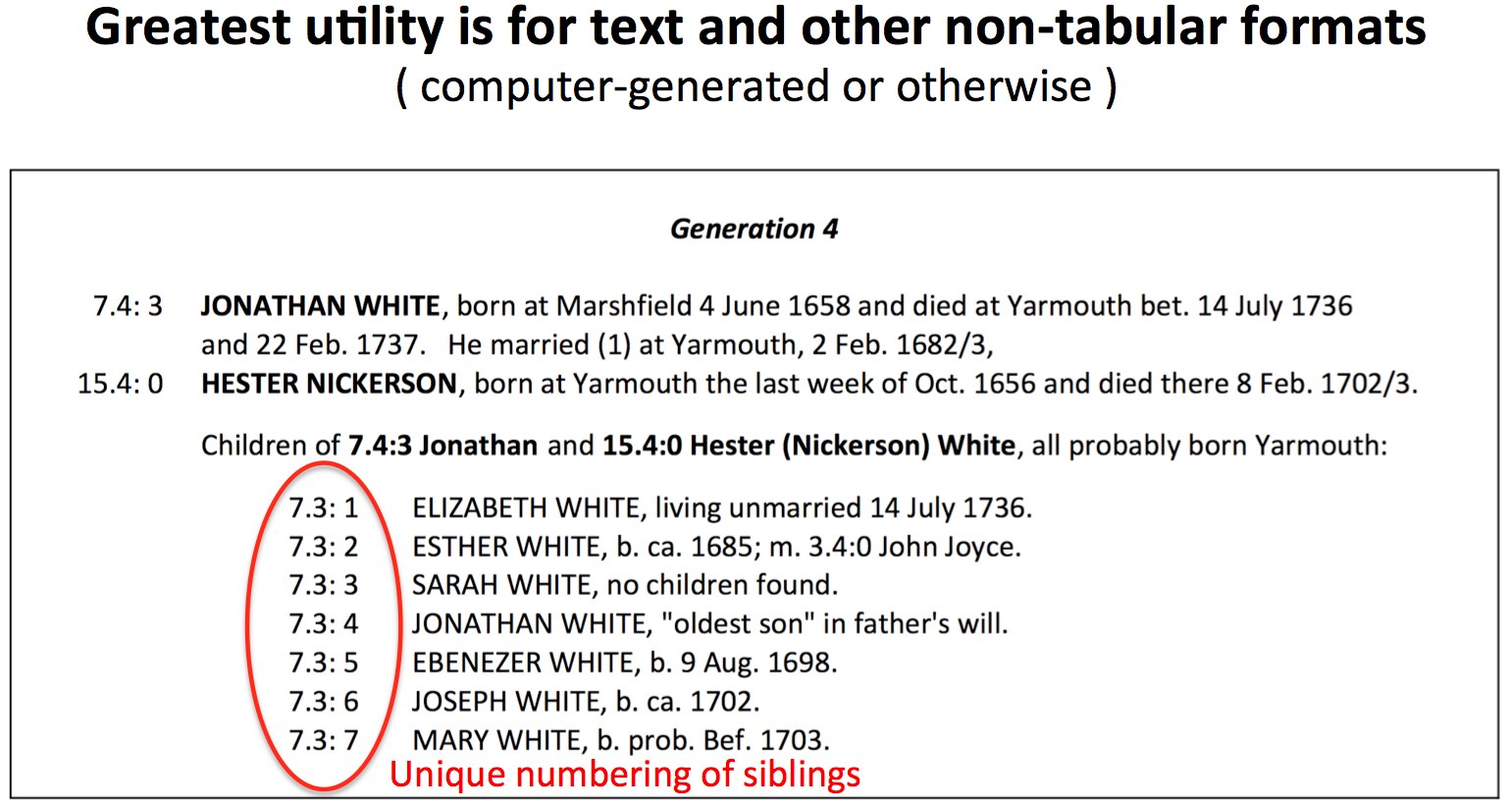
Ancestral Lines readily supports both the Y-DNA and mtDNA studies often paired with traditional family research. Patrilineal Line 1 can conveniently represent the Y-DNA line, and Ancestral Lines’ straightforward Generational numbering then matches with the testing companies’ and others’ supporting software formats that indicate the probabilities of when a Most Recent Common Ancestor (MRCA) is shared. Alternatively, the Matrilineal line of mother-of-mother ancestry, corresponding with mitochondrial DNA (mtDNA) test results, can just as conveniently be set as Line 1. These and other aspects of genetic genealogy applications are discussed under “DNA Studies” on the New Developments page of this website

To fully account for Sibling relationships, there is then the option to number all the Pairings of each direct ancestor and thereafter number all offspring as Siblings within their Pairing. With this alternative, a four-number format assigns a number for each Pairing by Line and Generation in the entire collateral family, and then assigns a number for each Sibling within their nuclear family. This extended approach most clearly identifies different Pairings as well as the half-Siblings of collateral Pairings, of which there may be several in any Generation, both paternal and maternal. All three approaches are covered in the full PDF version of the first published article from 2011.
Ancestral Lines is mathematically based and readily computerized. It is also, by its very nature, not constrained by time or place – hence the introductory titles in English and 12 other widely-used languages above. The idea is that we all can use Ancestral Lines to help celebrate our heritage! And we are on our way, with the following countries each represented by multiple visitors to this website during its first few weeks: USA, Netherlands, Belgium, Canada, United Kingdom, Australia, Germany, Israel, New Zealand, Spain, Mexico, Slovak Republic, France, Ireland, Colombia, Brazil and Russia.
Family Book Creator Software for Ancestral Lines
Ancestral Lines numbering is now available as a feature of the Family Book Creator software program (http://www.familybookcreator.com). This is produced and sold as a plugin extension for Family Tree Maker (http://www.familytreemaker.com).
An Ancestral Lines Pairing System: Uniquely Numbering Each Ancestral Line, Generation, Pairing and Sibling” article © Copyright 2011 Capers W. McDonald.
“Matrilineal (mtDNA) Ancestry of Cecilia Lockwood – Presented as a Direct All-Maternal Lineage Using an Ancestral Lines Pairing System” article © Copyright 2015 Capers W. McDonald.
This website and all images it contains are being used for limited and noncommercial purposes, principally colleague and collaborator communications and shared learning.
